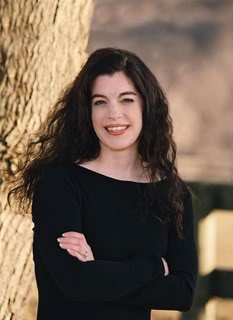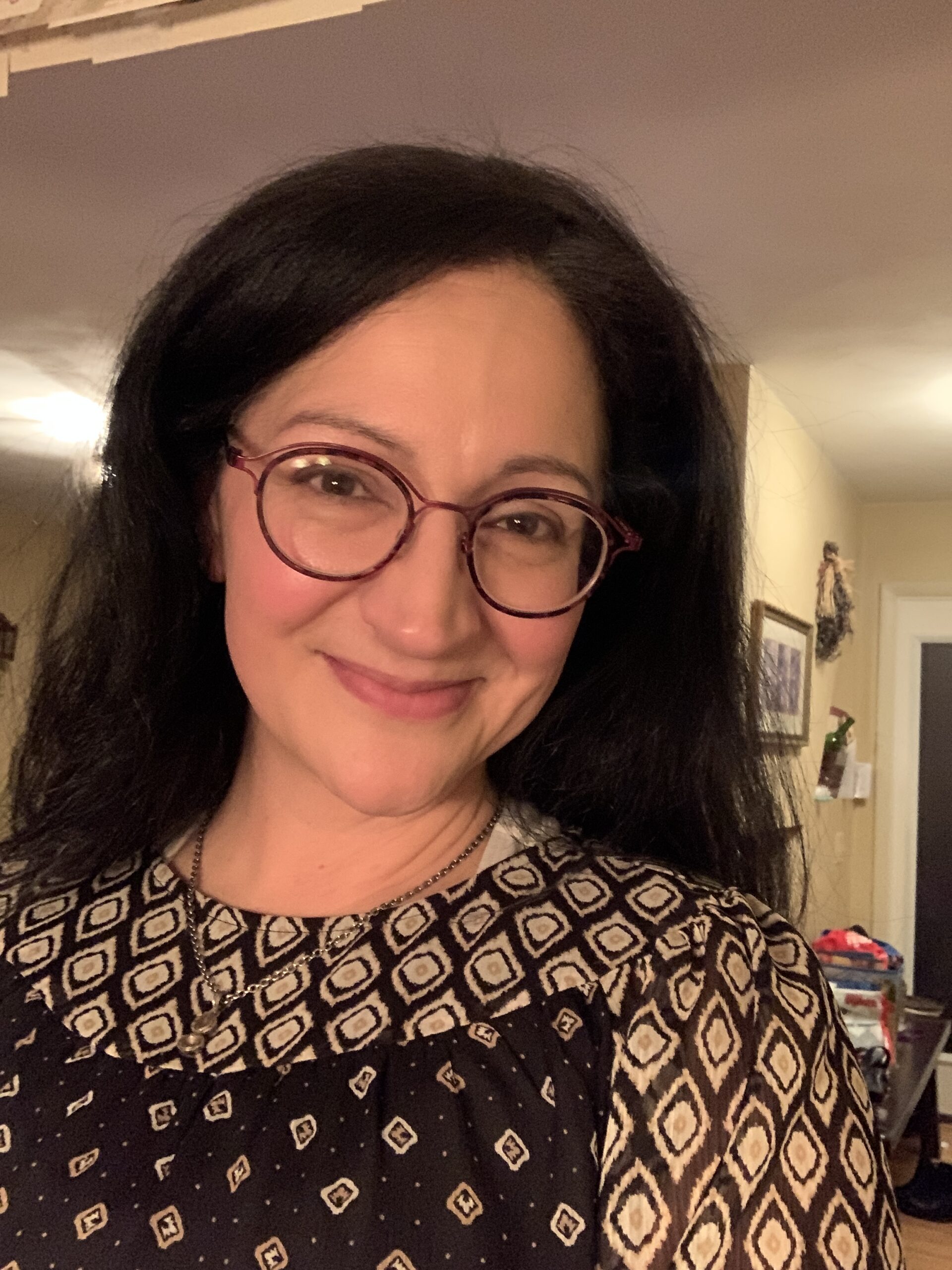INTERVIEW: Jeri Smith-Ready, Part 1
By Therese Walsh | March 30, 2007 |
 The synopses of fellow blogger Jeri Smith-Ready‘s first two books recently caught my eye. Requiem for the Devil is a book exploring what might happen if Lucifer himself fell in love. Jeri’s new Aspect of Crow fantasy series, published by LUNA books, is also unique, exploring the interconnectedness of man and nature when animals become Guardian Spirits.
The synopses of fellow blogger Jeri Smith-Ready‘s first two books recently caught my eye. Requiem for the Devil is a book exploring what might happen if Lucifer himself fell in love. Jeri’s new Aspect of Crow fantasy series, published by LUNA books, is also unique, exploring the interconnectedness of man and nature when animals become Guardian Spirits.
“Sort of X-Men meets Clan of the Cave Bear,” Jeri says on her site.
While Jeri has been preparing for the October ’07 release of the second book in that series, Voice of Crow, she’s also been wracking up awards and nods for its predecessor. Eyes of Crow was just named a finalist for the prestigious RITA award (both as a book with Strong Romantic Elements and–since Requiem was e-published–as a contender in the Best First Book category), as well as the Colorado Romance Writers Award of Excellence. And here’s steaming-hot news from the presses: Jeri has just won the 2006 Romantic Times Reviewers Choice Award for Best Fantasy Novel! Congratulations, Jeri!
I enjoyed reading Eyes of Crow and interviewing Jeri Smith-Ready, who is a pure delight. Here is the first of our in-depth, three-part interview.
Part 1: Interview with Jeri Smith-Ready
Q: Tell me about your start in the industry. What moment defined your career as writer and author?
JSR: I wrote my first book in 1995-1996, about an environmental crusader-type guy fighting a coal mining company. That didn’t sell and probably didn’t deserve to. I consider it my “zero-th” or practice novel. My second novel, Requiem for the Devil, sold in 2000 as an e-book to Time Warner’s erstwhile e-publishing arm, iPublish.com.
(You can read more about that novel HERE.)
Requiem garnered a cult following (which is a nice way of saying only a few people read it, but those who did, loved it), including Stacy Boyd, who would later become one of the editors for a new imprint of female-focused fantasy, Luna Books. She asked me to submit a proposal, and the Aspect of Crow series was born.
Q: What stumbling blocks (if any) have you had along the way?
JSR: My biggest stumbling block/mistake was that after writing and selling Requiem, rather than sticking with fantasy (which I didn’t even know Requiem was until I tried to sell it), I went back to writing mainstream/literary fiction. Without an agent, it’s extremely tough for a new writer to sell outside of genre. It didn’t help that my next book was hard to pigeonhole (it had strong Christian themes but also included sex and profanity). I believed in that book and spent years revising it, when I should have moved on. Some novels just aren’t sellable, regardless of the quality of writing. This important lesson helps me look at my present and future work more objectively. Any mistake you learn from is never a true loss.
Grad school was also a huge stumbling block–I wrote very little during the two years I was getting my masters in environmental policy. On the other hand, graduate school gave me the discipline I need to meet deadlines–it effectively exterminated the slacker in me. Plus, it got me out of working in an office!
Q: Eyes of Crow, released in November of 2006, is part fantasy (magical and spiritual), part mystery, part romance and part women’s fiction. Did the plot unfold organically for you? Did your characters gift you with any surprises? And what do you consider yourself: plotter, pantser or a bit of both?
JSR: Ah, my pantser days are far behind me, I think. Only my zero-th novel was written that way, and its structure had irreparable problems. Requiem was written without an outline, but I wrote its climax first, so I always knew where I was headed.
Because I sold the Aspect of Crow trilogy on proposal, I had to have Eyes of Crow plotted in detail (and Books 2 and 3 in rough outline) before I began. However, many elements changed during the course of writing the book, even beyond the first draft. Sometimes what seems really cool and poignant in an outline turns out to be horrifying and/or illogical in execution.
For instance, I had originally planned for Marek to trick Rhia into going to the mountain for the ritual, rather than it being her choice. It took a beta reader’s freak-out to make me realize this breach of trust would have irreparably damaged Marek and Rhia’s relationship. That beta reader saved the book.
Even worse, in my original trilogy outline, I had planned to kill Marek off in Book 2. It only took a few days with his character during the writing of Eyes of Crow to realize I could never do that! What was I thinking? Bad, naughty, evil Jeri!
My most recent book, Voice of Crow, I plotted very carefully, because I was working with four POV characters (the most I’d ever done before was two, in a novella). I had to make sure none of them went “offstage” for too long and that the main focus remained on Rhia (and that I didn’t end up with a 900-page manuscript).
So I used index cards, one per scene, a technique I enjoyed a few years ago when I wrote an original screenplay. The cards listed the POV character, the place, the time, and basic events. They were also numbered, in case I dropped them. It was useful to jot down thoughts for a particular scene without hunting it down in the manuscript.
The index cards were a lifesaver during revisions, because I could easily reorder scenes. Also, when scenes overlapped chronologically (with two different characters in two different places), I could physically line up the scenes on the floor and figure out which could come after which. I don’t like when books “backtrack” in time from scene to scene, unless it’s a deliberate stylistic choice.
Q: You mentioned using a beta reader. Tell us about that and how using a beta reader might be different than using a regular old critique partner?
JSR: Beta readers aren’t necessarily writers. Two of my beta readers are, but they haven’t finished a novel yet, so I haven’t been able to return the favor, except in gratitude and cookies. One of my best beta readers is a counseling psychologist and very creative in her own right. She keeps my characters realistically portrayed and also helps me brainstorm.
Non-novelist critiquers are less forgiving. A fellow novelist might think, “Oh, she was probably rushed to make a deadline, so that’s why the scenes in the last third of the book have no emotional logic whatsoever.” I don’t want understanding and support, I want a brutal critique, because ego-stroking won’t make a better book. I can’t understand why some best-selling authors consider it a privilege not to be edited. In my opinion, they’re losing a big opportunity for improvement. (Ask me again the first time an editor tells me to make a change I don’t want to make.)
Q: What is your writing process? What story elements do you tackle first? And how long does it take for you to move from concept to completed work?
JSR: Each book has its own process, which I discover along the way. I think this is partly my way of tricking myself into working. I’m the hardest-working lazy person I know.
Seriously, though, we begin each project at a different psychological, philosophical, and creative point in our lives, so what worked last year won’t necessarily work again, no matter how similar the projects. We have to teach ourselves how to write each new book. We’re not making widgets on an assembly line–we’re creating life. Readers can tell when we’ve begun to “crank out” books–which has nothing to do with speed of writing and everything to do with the level of engagement.
All that being said, for the last few works I’ve used the concepts in Christopher Vogler’s Writer’s Journey to help mold and structure the plot at the outline level. Each POV character has his or her own “Hero’s Journey” that contribute to the overall story. I then use a Tarot deck (Haindl’s, if anyone’s interested) and draw a card for each step of the journey for each character. It helps me get in touch with my intuition and brings out conflicts and connections I hadn’t considered.
Then I take all this hard work, shove it in a drawer, and totally forget about it while I write the first draft. The outline is always in the back of my mind, but not looming over me, stifling spontaneity and surprises.
As to the amount of time it takes, it also depends. Epic fantasy takes longer than urban fantasy for me because of the world-building involved, and because the characters can’t use colloquialisms or slang. I write faster when I can use every word in my vocabulary.
Come back next week for part two of WU’s interview with Jeri Smith-Ready!










Oooh, so she uses Tarot cards in her process? That’s intriguing. Great interview, Therese! Looking forward to the next installments.